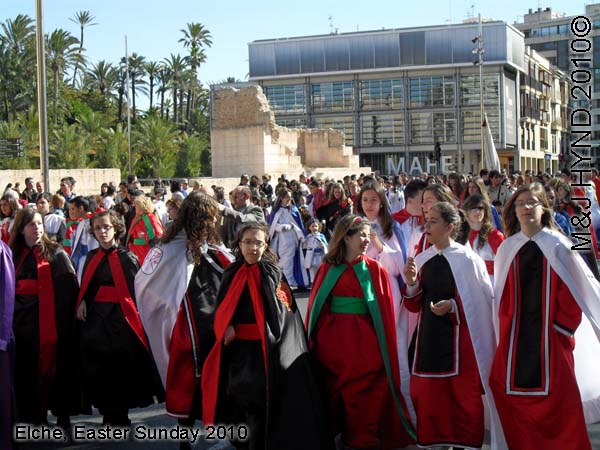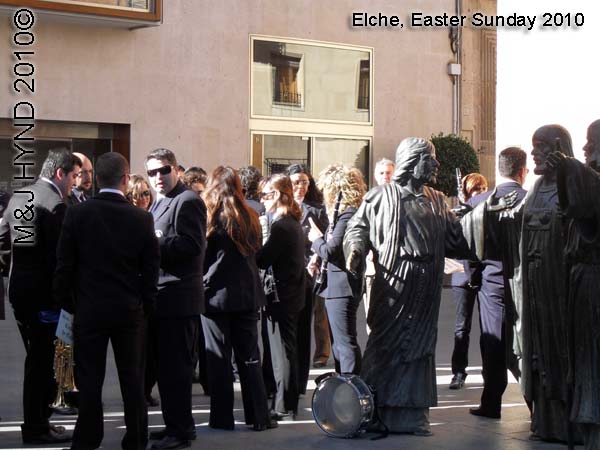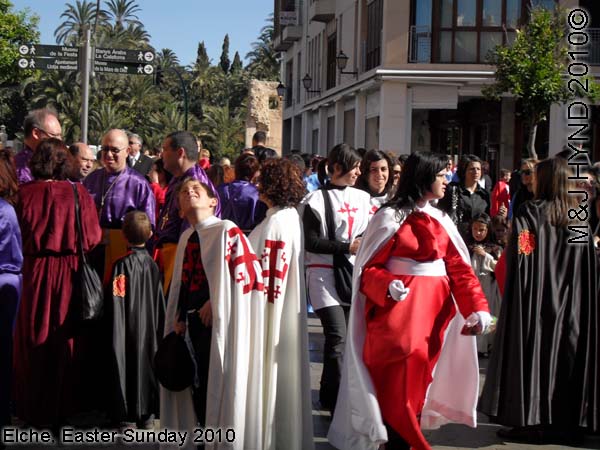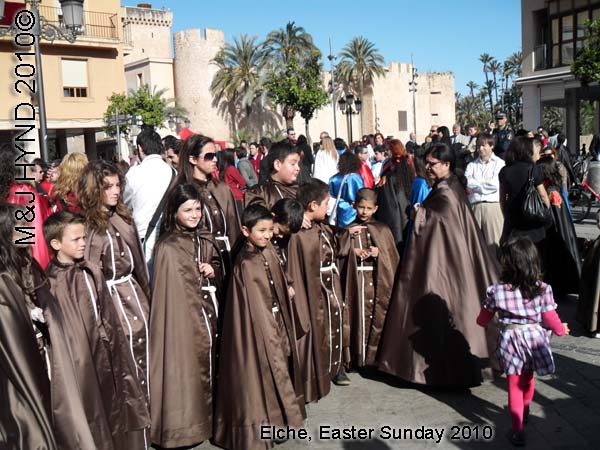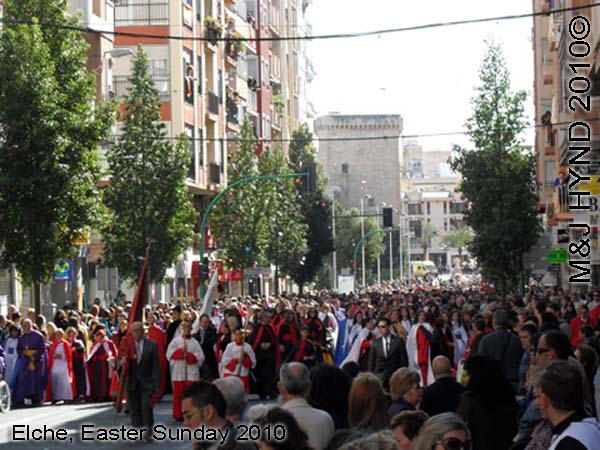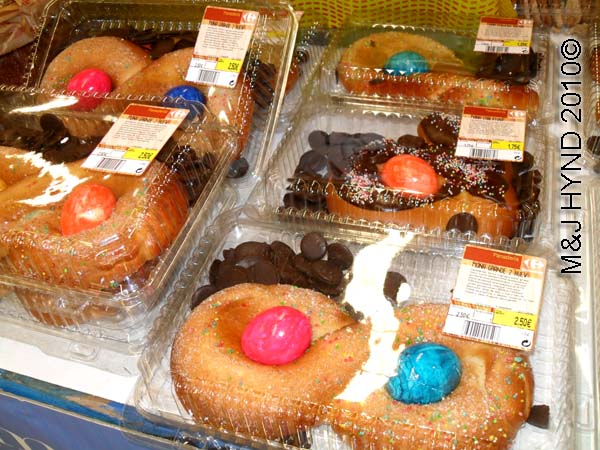Easter Week: Spanish Style
Easter Week or Holy Week or in Spain, Santa Semana Fiesta in Elche… a celebration of life, is the most important annual religious feast to the Christians. Visiting Elche, Santa Pola or Alicante, Spain during the Holy Week or Easter Week bring a different, unique perspective to celebrations of the fiesta culture. According to scripture, Jesus was resurrected from the dead on the third day after his crucifixion at Calvary.
Semana Santa Fiesta or the Easter Week also marks the end of a Lent season of fasting, prayer, and penance. It is a time of fervour, religious processions of the Semana Santa or Easter Week. The colossal weight of the decorated floats with Jesus and Mary statues, languid sway and somnolent chanting, all combining to produce a highly moving experience. As is the spectacle of dressed-up, hooded boys and girls, men, women, grandparents and babies of the brotherhoods and penitents.
Universally at Easter time, depending on the lunisolar calendar (or Hebrew calendar), there are wide sales of greeting cards and confectionery such as chocolate Easter eggs, marshmallow bunnies, hot cross buns.
The egg is widely used as a symbol of the start of new life. At the Jewish Passover, eggs dipped in salt water symbolize the festival sacrifice offered at the temple in Jerusalem.
easter treats: spain elche, Semana Santa Holy Week, pastry doughnuts, multi-coloured eggs, chocolate buttons
Some countries favour low-key or church ceremonies. Spain on the other hand goes all out, with street parades and processions in many towns and cities all over the country.
It has been especially renowned for its traditions called Holy Week (Semana Santa), a week full of ritual, symbolism and religious fervour.
The Easter Week celebrations or Semana Santa Fiesta in Spain, in Elche start with Palm Sunday (Domingo de Ramos), was declared a Fiesta of International Tourist Interest in 1997. Each day during the Holy (Easter) Week, the bewildering multitude of parades and processions fill the program until Easter Sunday (Domingo de Pascua).
The palm groves of Elche, a medieval heritage, is the calling card of Elche. In the Procession of Palms on the day known as "Palm Sunday", Elche comes into its own, thanks to the amount of white, blanched palm leaves available. Elche white palms have been exported for centuries throughout the Catholic world. Two days before this weekend, markets spring up at various places around Elche to only trade in white palms that are used for following the procession that the devotees carry.
Palm 'Saturday'
We were there on the Saturday, preceding Palm Sunday outside the Medieval Town Hall where we found trade people selling white palm leaves, some big and tall ones, plaited into various, intricate shapes; others were made into tie-pins, brooches, for decoration. A older lady stopped me and offered a white-palm brooch to me. When I said that I was only looking, not buying, … she said, “.. no, no, it’s a gift”... in Spanish. I accepted with gratitude, kissed her on both cheeks, and took a photo with her and her husband.
Proceeding to the white palm exhibition behind the market, was in the ante-room in the Town Hall itself. The competition is organised by the Council of Holy Week Guilds and Brotherhoods. It was amazing – intricately-plaited, complex designs of the white palms were on display; the contest winners’ entries were there to be admired and photographed. It was an impressive sight. There was even a Moorish-shaped dome with palm trees surrounding it, the likeness of the one of the building in the Palmeras Park in Elche! Then as we were leaving, another older gentleman-vendor stopped me.. and gave me a long white palm, … again, it was a gift. To say that I was taken aback by such kindness and generosity was putting it mildly. I also took a photo of him as well... photos tend to last longer than the gift, and it's a lovely reminder.
In this day and age, it was refreshing to see that the Spanish, especially the older generation, have such caring attitudes towards people with disabilities. (Click here for a write-up on the AVM-stroke I had.) It is said, that the blessed white palm is a sign of good luck for the year – I’ll be sure to have mine till next year.
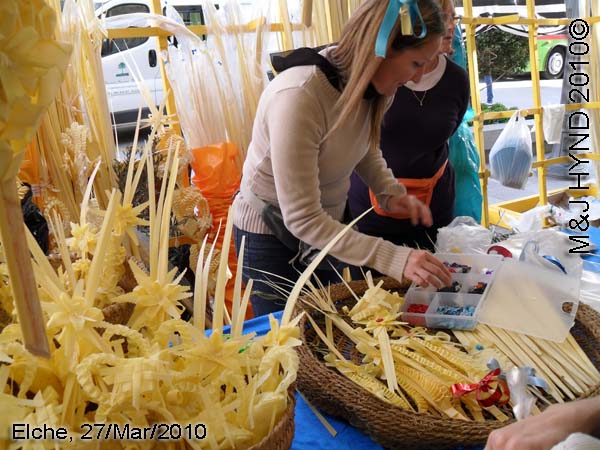
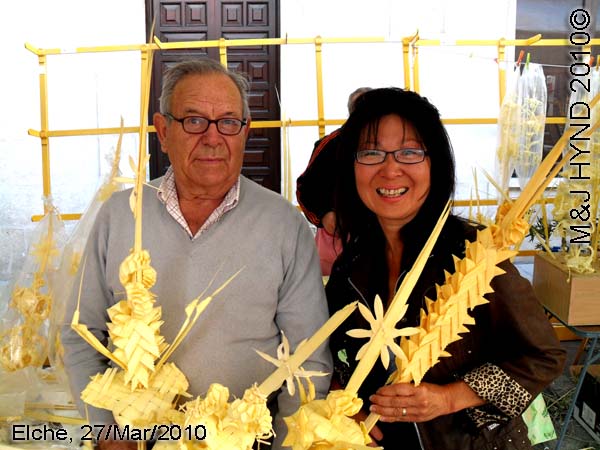
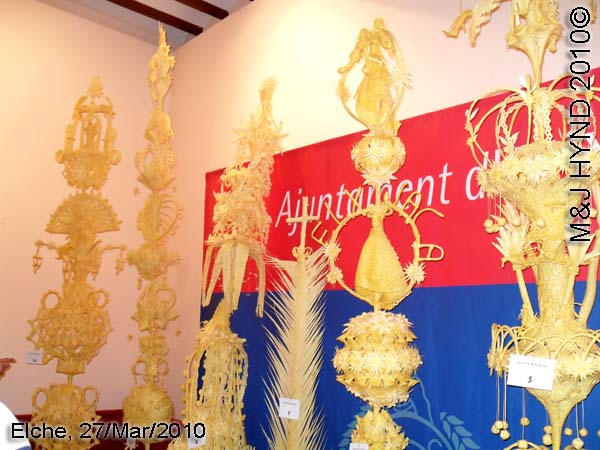
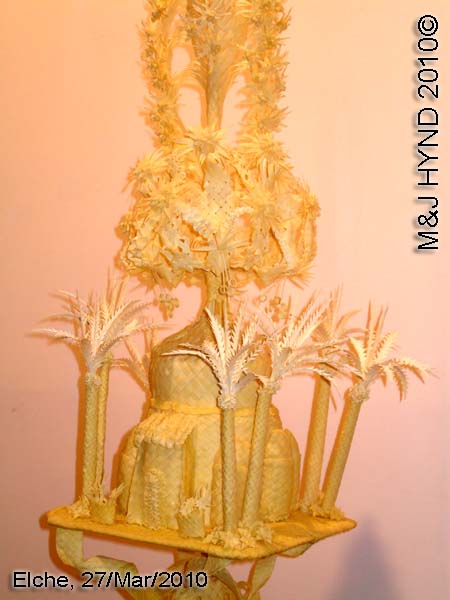
Palm Sunday
The next day was Palm Sunday, and the procession in Elche that we were going to witness, should be awesome – light breeze, warm enough not to need a jacket, sunshine and 20-odd degrees (C). It has always had a great participation with both visitors and locals, as one with the solemnity of the proceedings, and ending with a mass at the Basilica de Santa Maria.
In every little church in the hamlets we passed on the way to Elche that morning, were throngs of church-goers carrying white palms waiting to be blessed. We arrived to Elche early, but the roads had been blocked off for the procession, and many thousands of people: aunts and uncles, daughters and sons, husbands and wives trundling their babies in strollers, all carrying some sort of white-palm-leaf ensemble, brooches and tie-pins, dressed in their Sunday best, were walking through the palm tree parks to the start of the procession. Finding (free) parking at one end of the huge Palmeras Park (Elche Municipal Park), we joined them and arrived at the start of the proceedings, just outside of the train station.
The ‘costaleros’ (porters) have the weighty job of carrying the massive dais/throne-like platform (paso), a heavy-timber and steel structure, on which sat the statue of Christ, adorned with gold, silver and gilt, surrounded by beautiful white-palm-leaves. On other occasions when we had been holidaying in Vejer de la Frontera (Andalucia, Spain), the costaleros were ‘under’ the dais/platform which had the Christ/Virgin Mary statue, supporting the weight of the platform on their heads and necks – at that time, they were practising in the Semana Santa’s slow march and they were all men. On this occasion in Elche, the costaleros were carrying the paso on their shoulders, we were surprised to find the costaleros were all women.
All along the front of the Municipal Park, near the Moorish-like Tourist Office, towards the Basilica, the solemn procession commenced crossing over the bridge, the spectators admired the splendour respectfully. Amongst them were brotherhoods’ banner-carriers (religious fraternities) with their matching gloves, tunics, hoods and vestments. From young to the older generation, men and women, to babies in strollers, girls and lads. They could be involved in playing in the military-style band, or following the procession, or costaleros… or visitors taking photos and videos, everyone with their part to play and to enjoy the spectacle.
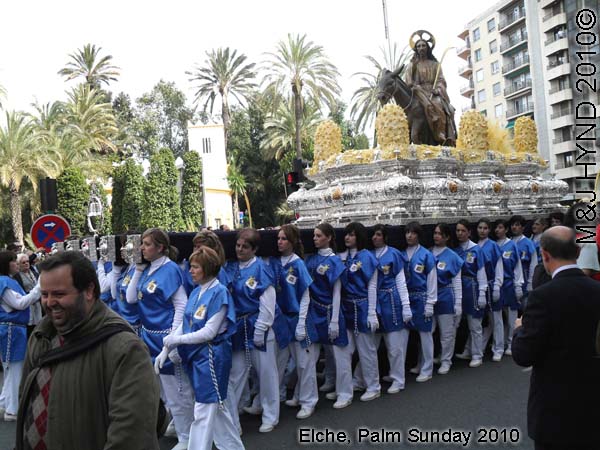
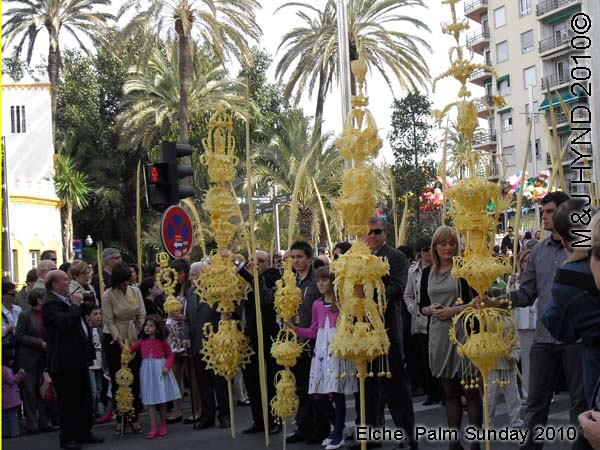
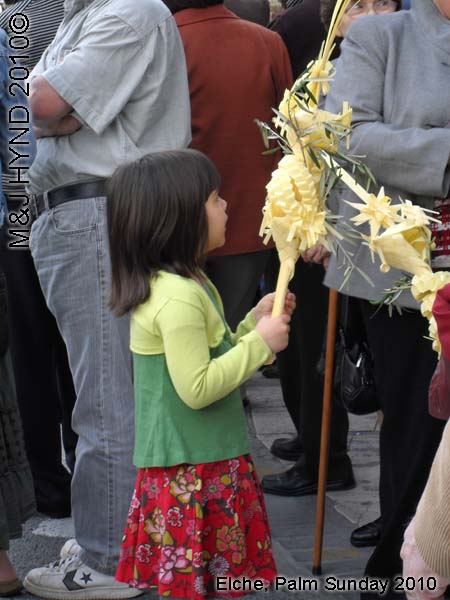
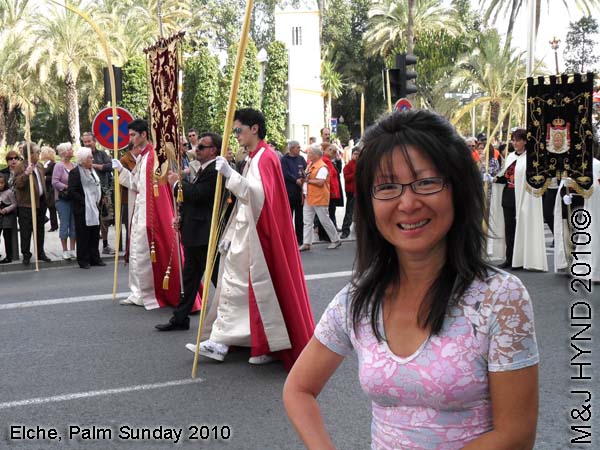
Weekdays before Easter Weekend
On Monday at dusk, we again joined in spectators in Elche, at the procession circuit. There are more than 30 brotherhoods in Elche. Brotherhoods (cofradias) were driving the procession, each having their turn, about 6 per night during the Holy week. From each of their parish, costaleros carrying the elaborate, religious float (paso), through the designated route, over the bridge to the old town, to where we were ensconced taking photos, and onwards.
But, there was one difference. Most of them, boys and girls, drummers and flautists, men and women some carrying candles, others carrying lit staffs – were hooded; the hoods, colours and style of the vestments in line with their fraternity; led by mantilla-coiffed women, beautifully dressed in black. Poetry in slow-motion, the slow shuffle continued, swaying in time with the music from the marching bands as the costaleros, at least 80 to 100, carrying each float, the ones that we saw.
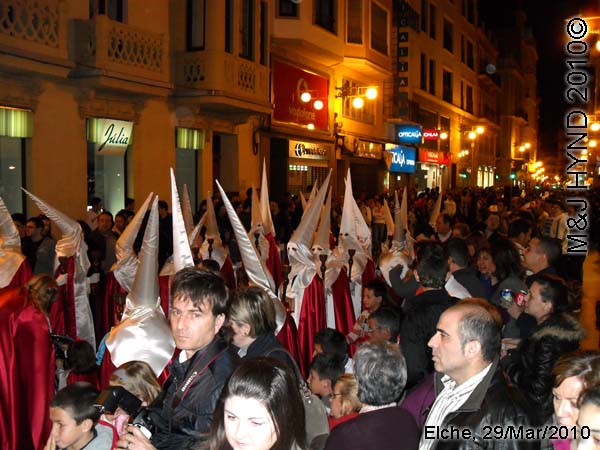
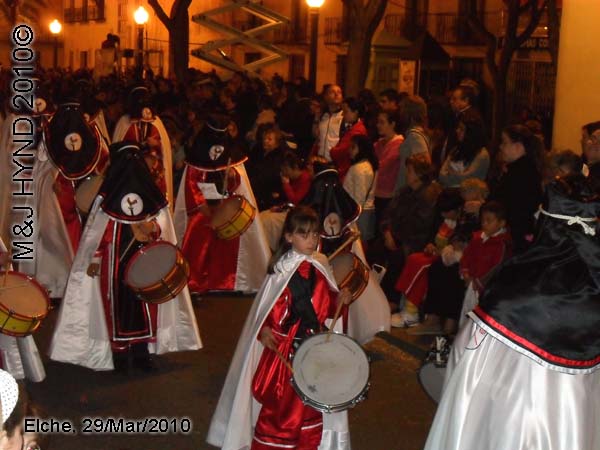
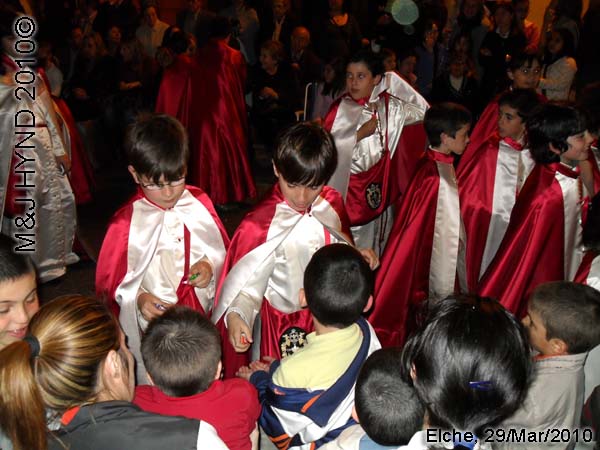
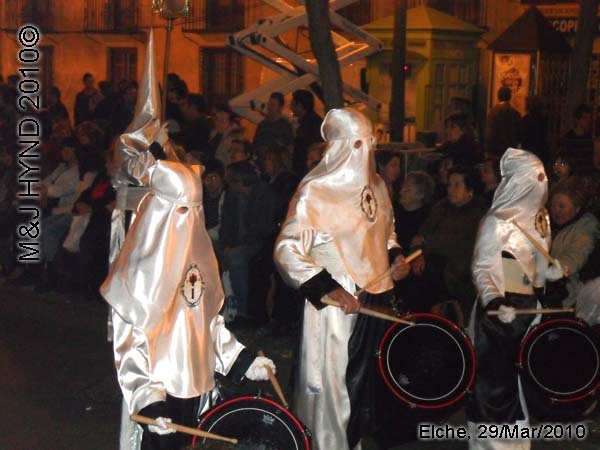
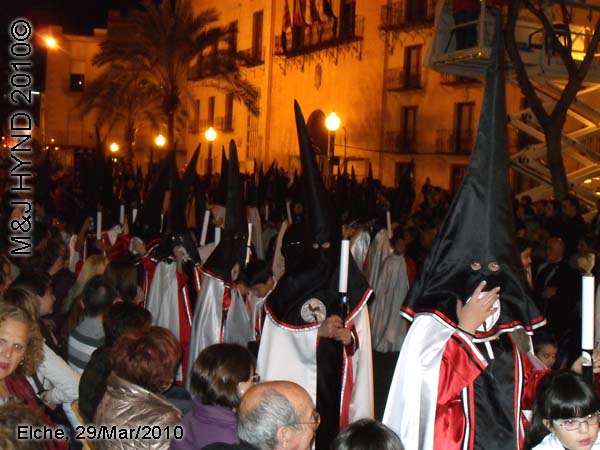
Maundy Thursday
To Alicante for the procession. Parked, we walked up to the quite deserted streets to mid-point of the procession circuit. We could hear the marching bands advancing – aha! Just in time to see of fraternity in blue, carrying a heavy paso; on either side lots of the blue-hooded Penitents and Nazarenos carrying lit-staffs.
Onwards, we hurried to the centre of Alicante … and that was the reason for the near-empty streets - everyone was there at the Rambla. Booked seats and raised dais for the spectators, 7 to 8 deep, a ‘saeta’ (emotional, religious music, taken from the flamenco) being sung in the main street, lots of colour people milling around, TV cameras and spectacular live footage.
We saw yet more brotherhoods, all cloaked and hooded; reliving this ancient tradition, going through the pedestrianised shopping streets, very narrow, and full of people seated in tables outside the restaurants!
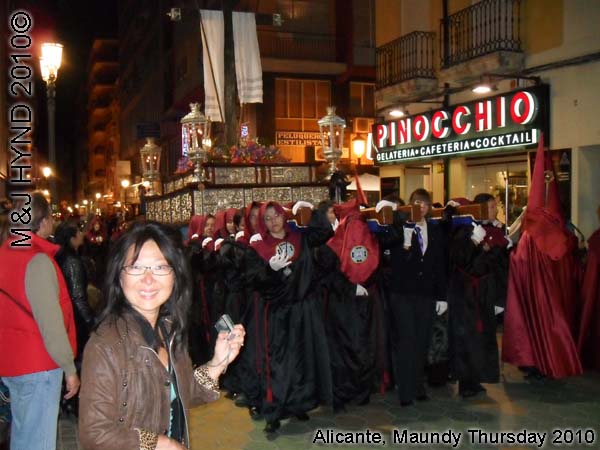
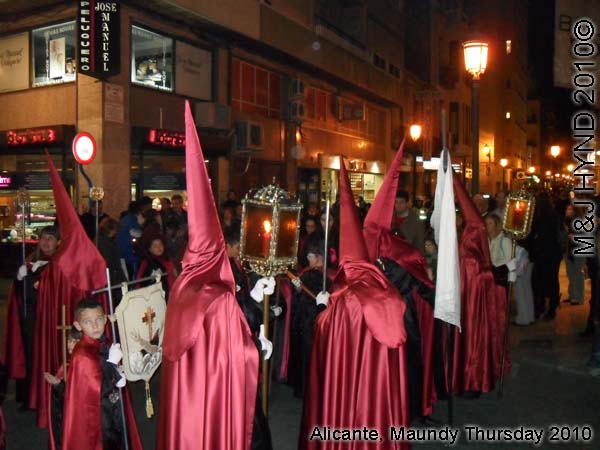

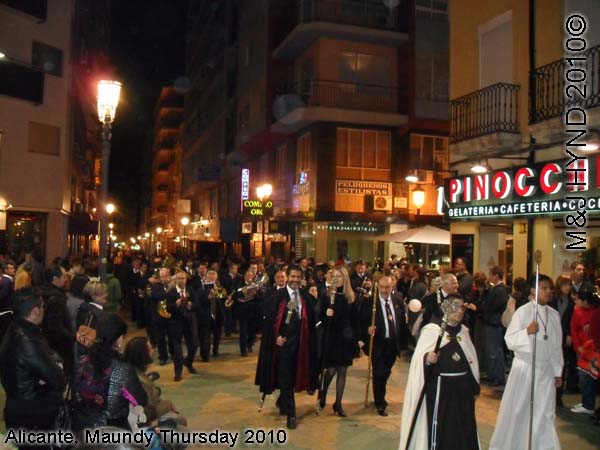
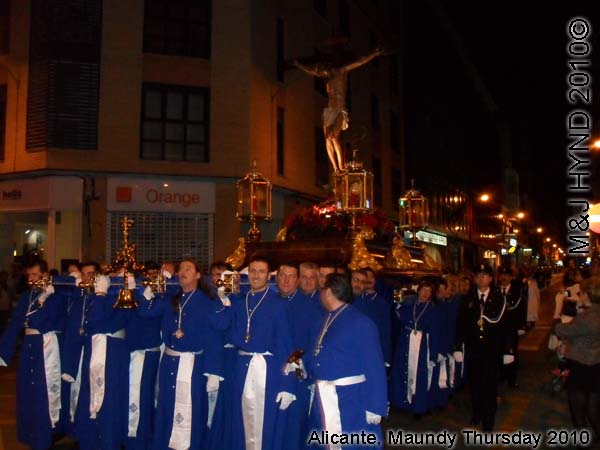
Easter Weekend
On Good Friday, we visited Santa Pola. By contrast, the procession route in Santa Pola was through narrower lanes so it had a more intimate feel than in Elche or Alicante. The route wound around lanes near the Castillo which thronged with visitors and locals. The procession had started, again many groups of brotherhoods had their paso to be carried through the town.
The turning width of the paso was nail-biting to watch when they did a multi-point-turn in perfect slow-march time, all 50 costaleros (sometimes even more) as one… as were unique actions like lifting the paso clean off their shoulders in one dramatic movement, like synchronised weight-lifters, and holding the paso aloft, tip-of-the-fingers almost, then slowly lower it againto their shoulders. One group of costaleros went a stage further and let the paso drop suddenly, effectively ‘catching’ the paso on their shoulders alone – thoughts of costaleros embedded in the tarmac suddenly sprung to mind. The crowds had a sudden intake of breath, then erupted into cheers. Murray subconsciously rubbed his knees….
Or, big sudden strides instead of shuffling steps in time with the music bands– the audience applauded enthusiastically and for some imaginary wiping their brows in mute admiration of the level of trust and concentration of their fellow compatriots.
On the Saturday, we visited the Medieval Market at Santa Pola, in line with Easter celebrations, full of court-jesters, lilting music, food galore - to taste and buy, medieval characters. More of this, in my next musing.
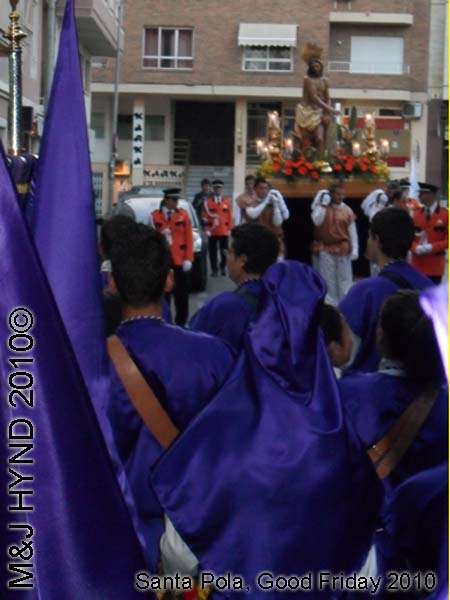
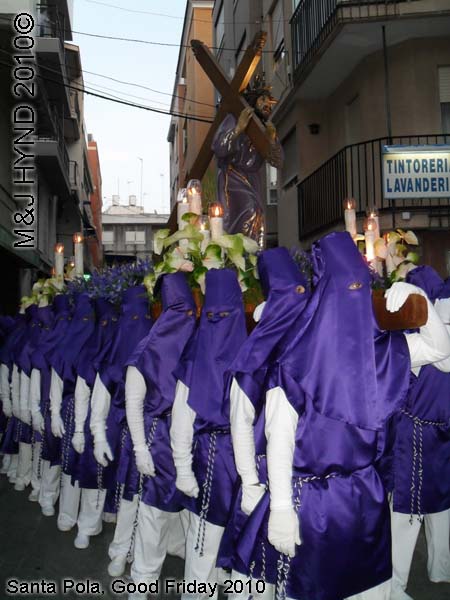
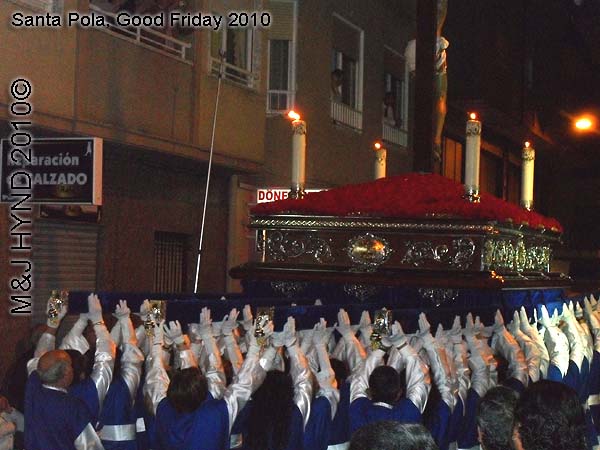
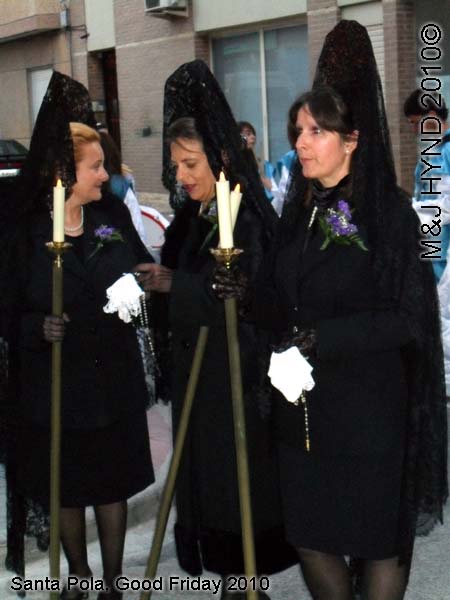
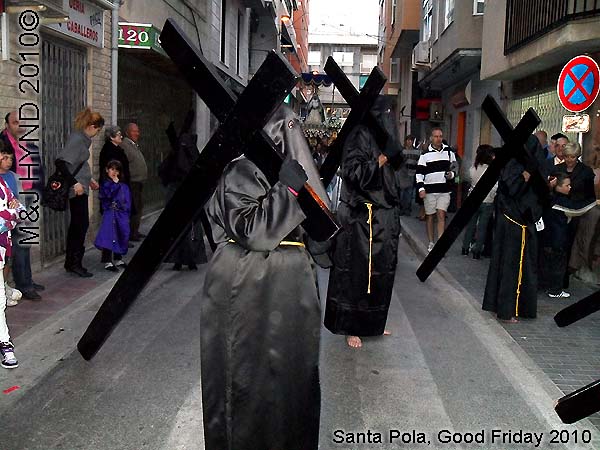
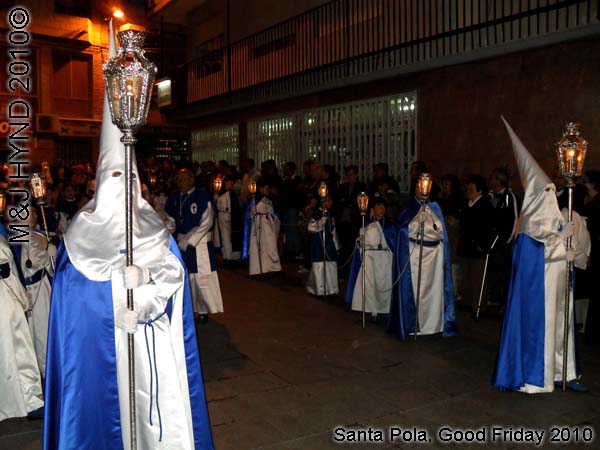
Easter Sunday, is synonymous with light-hearted joyous events, bunting adorns the streets, and multicoloured paper-confetti momentarily and sporadically populate the sky. We made it to Elche for the parade and Wow!!! There was no parking to be had – there were so many people, more than at the start of the week on Palm Sunday.
At the Basilica, throngs of multicoloured cloaks of the brethren, all the brotherhoods mingling together at the same time waiting for the start of this Easter Sunday procession, dating from the 18th century. Called the ‘hallelujah’ procession it is a joyful affair; paper confetti cards with saints printed on them came showering down on the waiting crowds – little children had lots of fun, seeing how many they could catch in flight or pick up, as the belief is they would draw favourable blessings for the year by the saints themselves.
Big fireworks, cries of hallelujah echoing in the streets… leaves a lasting impression. Semana Santa, or Holy Week in Spain, wherever you may be, is an experience that you’ll always remember. The traditions may observe a slight change or accent to the religious celebrations. For Christians and the non-Christians, it is a sobering yet empowering experience that draws us all to reflect on our own culture and the meaning in the theatre of life, while enjoying the sweeter things that Easter brings.
Elche, with the white-palm spectacular to start the proceedings in line with the medieval splendour of the palm tree groves, set the scene of the journey, more than 2000 years ago for Easter. Elche, Alicante, and Santa Pola all do their own celebrations and processions for the Holy Week, probably the biggest festival in the Spanish calendar. When you holiday here, you’ll be spoilt for choice as to which one provides more colour, spectacle and sheer scale or intimacy of these events.

